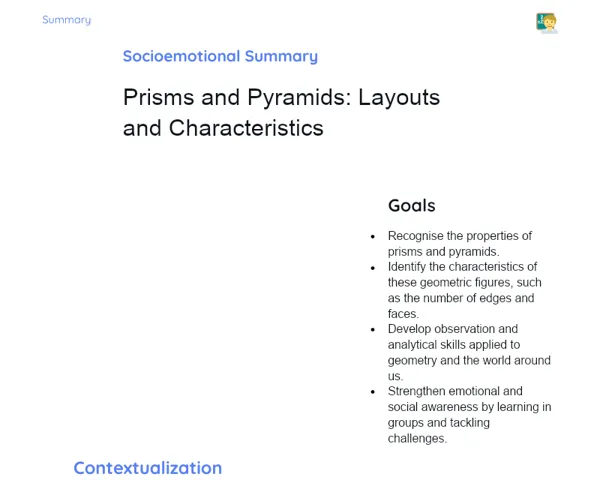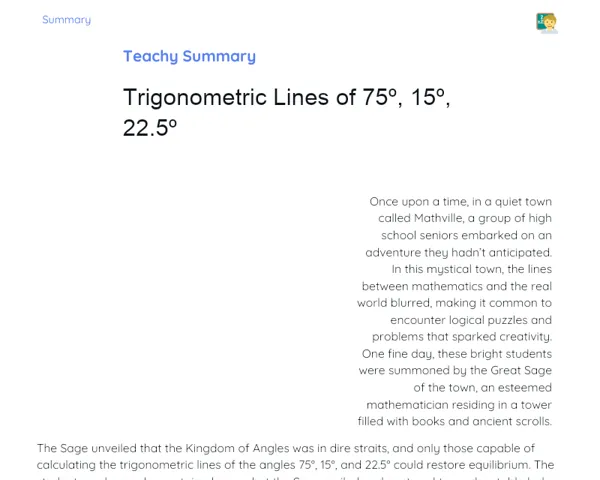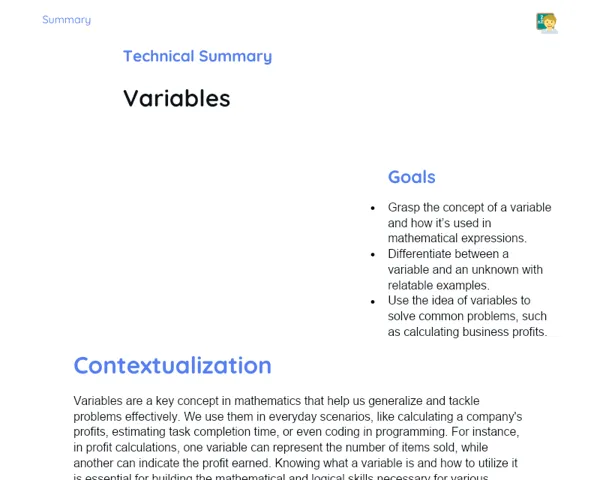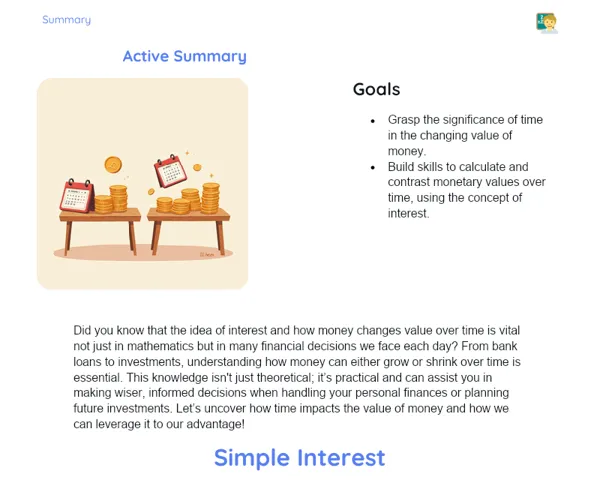Objectives
1. Understand and explain the key property of triangles: the internal angles always add up to 180°.
2. Develop the skills to calculate unknown angles in triangles using geometric theorems and fundamental properties.
3. Apply this knowledge to everyday scenarios, highlighting the significance of geometry in our daily lives.
Contextualization
Did you know that one of the cornerstones of geometry is the rule stating that the sum of the internal angles of a triangle always totals 180°? This principle is vital for grasping geometry and extends into practical applications across various fields like architecture and navigation. For example, early mariners used triangles for distance calculation and navigation at sea, heavily relying on this mathematical property. By mastering this concept, you're not just learning mathematics; you're gaining a crucial skill for tackling everyday challenges and better understanding the world around you.
Important Topics
Sum of Internal Angles of a Triangle
In any triangle, the sum of the internal angles is always 180 degrees. This is a foundational principle of Euclidean geometry, laying the groundwork for many other theorems and properties of shapes. The classic proof involves drawing a line parallel to one side of the triangle, effectively dividing it into two smaller triangles, each with internal angles summing to 180 degrees.
-
Whether it's an equilateral, isosceles, or scalene triangle, this property holds true.
-
This principle is key for solving geometric problems across disciplines like civil engineering and navigation.
-
It’s typically one of the first properties introduced in geometry, forming a foundation for numerous other concepts.
Calculating Unknown Angles in Triangles
Once we recognise that the internal angles of a triangle sum up to 180 degrees, we can use this to find unknown angles. For example, if two angles of a triangle are known, calculating the third becomes straightforward. This concept is vital for addressing both practical and theoretical problems that involve triangles.
-
The 180-degree rule enables you to determine the third angle when two angles are already known.
-
It fosters the development of analytical skills and logical reasoning necessary for tackling geometry problems.
-
This understanding is essential in fields such as engineering and construction, where accurate angle calculation is critical for safe and sound structures.
Practical Applications of Triangle Properties
The knowledge regarding the internal angles of triangles isn't just theoretical; it has a myriad of practical applications. For instance, architects, engineers, and game designers draw upon this property to create aesthetically pleasing, geometrically sound structures and environments.
-
In architecture, this property aids in the arrangement of elements within a façade or the spatial distribution inside buildings.
-
In the realm of digital gaming, correct geometric principles are necessary for crafting immersive and interactive settings, as well as ensuring smooth physical simulations.
-
In navigation and map-making, comprehending the behaviour of triangles is crucial for accurate map representation and navigation over long distances.
Key Terms
-
Triangle: A flat geometric figure with three sides and three internal angles.
-
Internal Angles: The angles formed within a triangle by its sides.
-
Property of Triangles: The sum of the internal angles in a triangle always equals 180 degrees.
For Reflection
-
How might the properties of triangles assist in determining the position of an object in three-dimensional space?
-
In what capacities can understanding the sum of internal angles help tackle practical everyday problems?
-
Why is it important to have a grasp of basic triangle properties, even with technologies that can automatically calculate angles and measurements?
Important Conclusions
-
We've reviewed the essential property of triangles: the internal angles always sum to 180°, regardless of the triangle type.
-
We've explored the relevance of this concept not only in mathematics but also in practical contexts such as design, architecture, and navigation.
-
We've developed the skills necessary to calculate unknown angles in triangles, which is vital for solving a variety of geometric challenges.
To Exercise Knowledge
- Draw three different types of triangles and calculate the sum of the internal angles for each. 2. Use the properties of triangles to calculate the height of an inaccessible object, like a building, using a triangle formed by you, the object’s peak, and the ground. 3. Create a physical model of a triangle and manipulate the angles to observe how the sum of the internal angles remains constant.
Challenge
Triangle Detective Challenge: Using a geometric drawing app or computer software, draw a triangle with a 90° angle. Determine the measures for the other two angles such that they adhere to the 180° rule. Present your findings and thought process in a short video.
Study Tips
-
Practise sketching different types of triangles and checking the sum of the internal angles; this aids in visualising and grasping the concept better.
-
Try explaining the property of triangles to a friend or family member. Teaching is an excellent way to reinforce your understanding.
-
Explore videos and online tutorials that illustrate practical applications of the angle sum in triangles, such as bridge and building construction.



